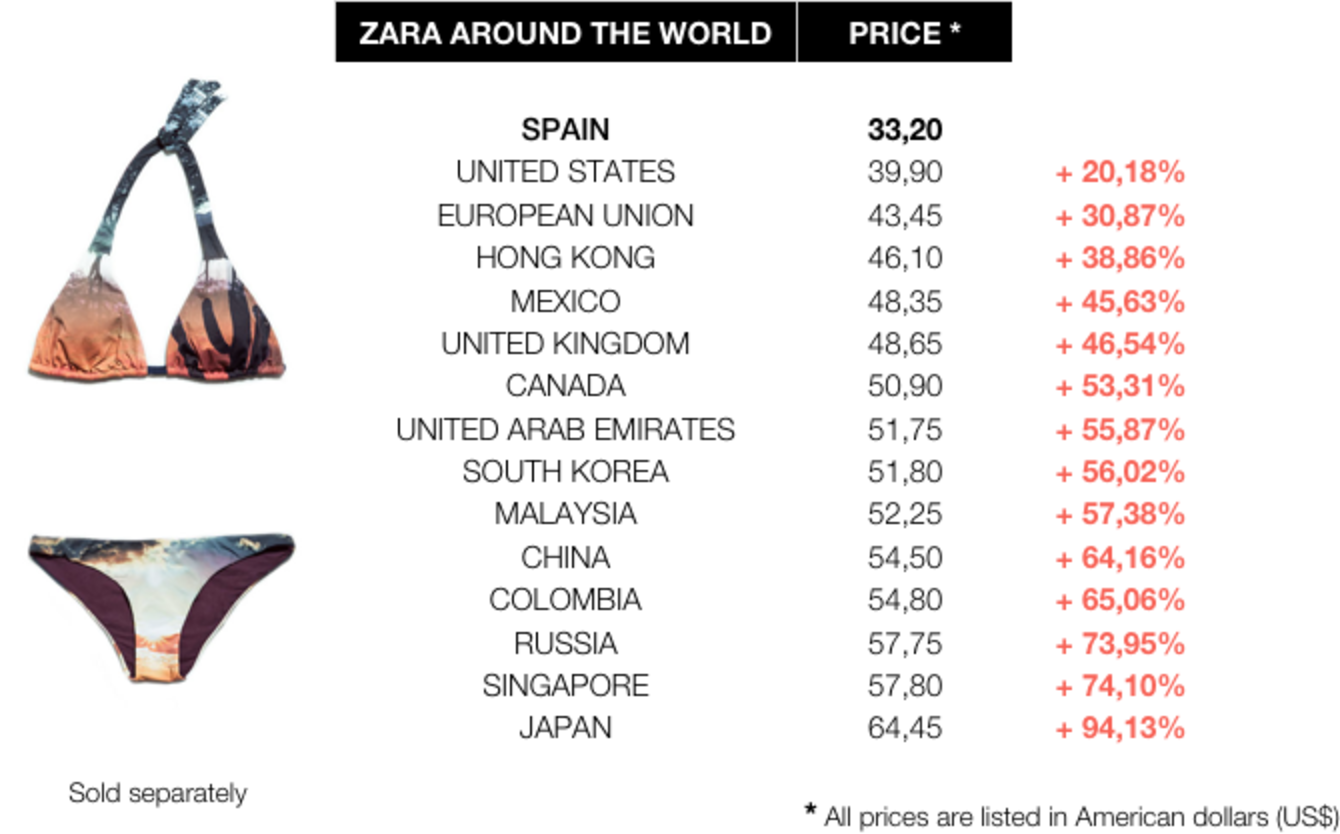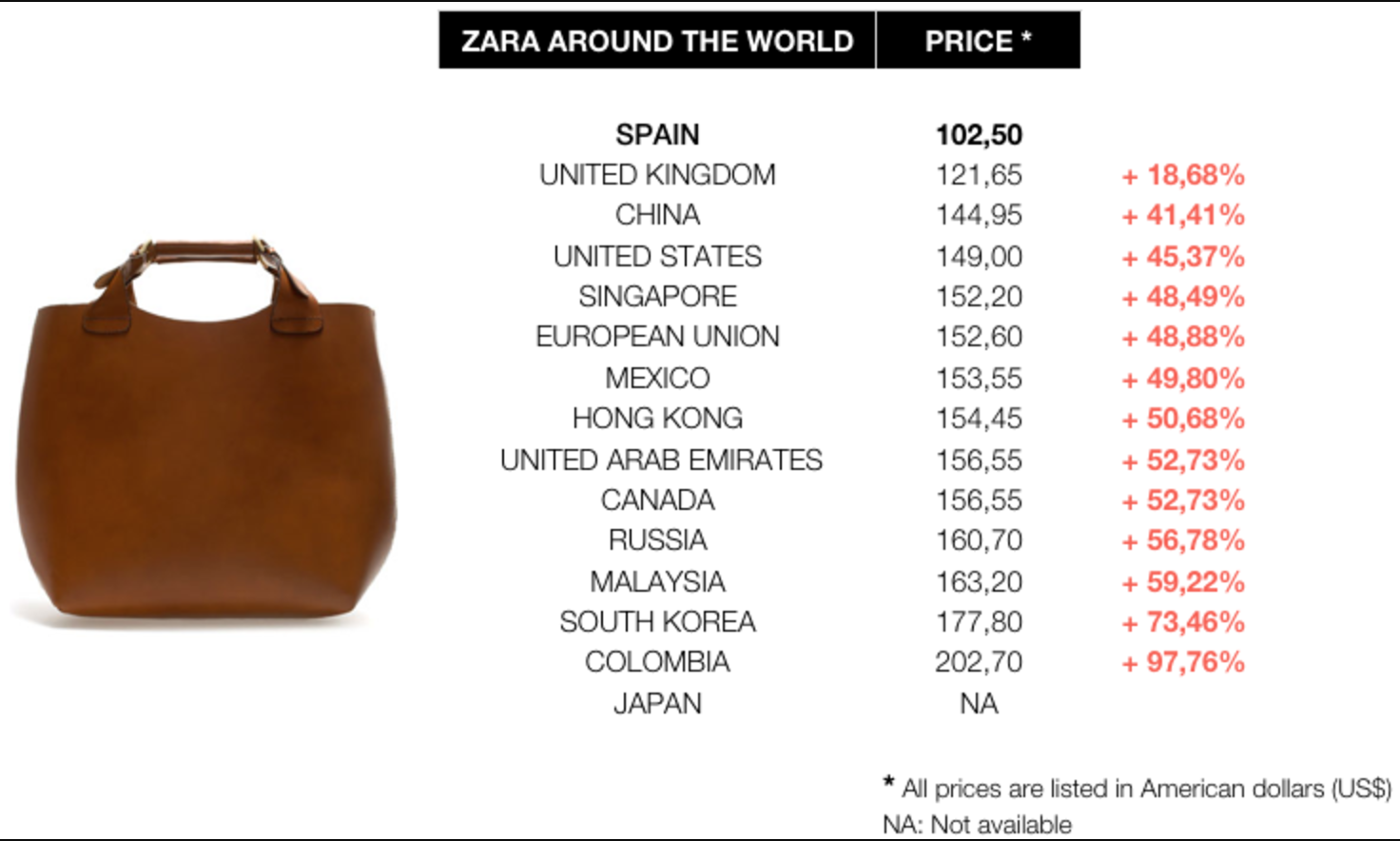Zara Has a Pricing and Sizing Problem

Zara, the Spanish-based retailer famous for its quality yet affordable “fast fashion” clothing and accessories, is a global brand.
The company, founded in 1963 Amancio Ortega (the world's second-richest man), counts 6,500 stores in 88 countries including the United States. Forbes named Zara as one of the world’s most valuable brands, worth $10.7 billion. By any measure, Zara is a success story. As Business Insider noted last year, "Zara's business is on fire".
Zara's success is based on its fast-fashion marketing and pricing strategy. Unlike other brands that update stock once a season, Zara stocks very little and updates its collections with new designs twice a week. According to the New York Times, the Zara strategy works because it encourages customers to come back to the store often and they feel compelled to buy an item before it is sold out.
Image credit: Zara.
Zara's global expansion has encountered some problems, however, notably in the United States. Two of Zara's biggest problems are pricing and sizing.
Let's start with pricing. The price of Zara products changes drastically depending on location, which can affect both sales and the perception of the local market. For example, the prices of some items in Zara Spain are much less expensive than the same items sold in Zara Russia. Some websites, like ZaraForwarding, list the country-by-country price differences in Zara stores. As you can see below, Spanish buyers get cheap prices, which are considerable higher in other countries — nearly double in Russia.
Last year, Who What Wear published an article, showing Zara price fluctuations, titled "Where You Should Never Buy Zara." The article concluded: "The results revealed that shopping in Zara's home country was by far the most affordable, while of all the places we surveyed, Japan was most expensive. The U.S. fell somewhere in the middle."
Image credit: ZaraForwarding
Zara explains that prices are set independently in each market. Prices differ to cover the costs of things such as transportation and taxes. Even so, when prices increase, consumers expect more. With the cost of clothing in the United States being so much more than in Europe, perceptions impact sales. Prices makes a big difference to people in their perception and purchasing habits. Even if the quality of Zara items in the United States and Europe is the same, consumers don't like paying more. If people pay more, they expect better quality — but with Zara clothing, that isn't the case.
Now let's look at sizing. This is one reason Zara's expansion to the United States has been a problem. As Elle magazine asked, "Does Zara Have a Size Problem?" The answer is yes. The Economist magazine, in a piece five year ago titled "Fashion Forward", noted that Zara was struggling in America. "It sells trendy cuts and slim fits. Outside the biggest cities, Americans have long preferred classic, roomier clothes (though this may be changing)."
Zara does not offer “vanity sizing,” which allows customers who wear an 8 or 10 to fit into a size 6. The fact is that flattering customers boosts sales. Zara hasn't understood this, especially in a country like the United States where women tend to be larger than tiny women in cities like Paris. As Elle observed, "For Zara to do well here, perhaps they'll need to adopt the flattering—yet unrealistic system as well?
For American shoppers in Paris, Zara stores at least let you test some of their new designs before they are exported to the United States at higher prices.










